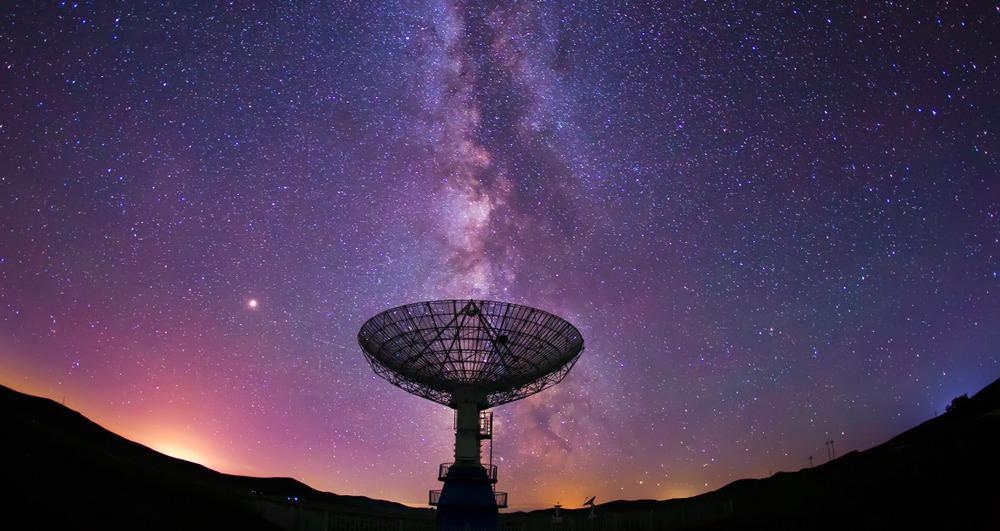Institutions in the UK, Spain, and the Canary Islands are ready to break ground on an ambitious project to build the world’s largest robotic telescope on the island of La Palma in the Canaries. The enormous automated mechanical structure will enable astronomers worldwide to watch dynamic events in space such as supernovae and cosmic rays as they are unfolding in real-time.

Image Credit: zhengzaishuru/Shutterstock.com
NRT: The World’s Largest Robotic Telescope
The new telescope, aptly named the New Robotic Telescope (NRT), will cost around £24 million to construct. Its unique feature is its automated robotic mechanism, which can position the lens within 30 seconds of receiving a signal of a fast-moving astronomical event in the sky.
This means that celestial events such as colliding extra-terrestrial objects and exploding stars can be studied as they are happening. These events are dynamic and fade from view all too quickly; positioning powerful telescopes quickly is incredibly important if we want to understand how these events work.
NRT will be the largest automatic robotic telescope of its kind when construction is complete, with a diameter of four meters. The four-meter-wide primary mirror is composed of 18 individual hexagonal segments.
These combine to make the NRT up to four times more sensitive than the previous record-holding telescope – the Liverpool Telescope (LT) currently in place at the La Palma site. The NRT is being designed as a sister operation to the LT facility.
Liverpool John Moores University (LJMU) already oversees the LT and will continue to work in La Palma with the NRT. Spain’s University of Oviedo and the Institute of Astrophysics of the Canary Islands (IAC) are also contributing to the operation.
Construction is now underway thanks to a £4 million injection of funding from the UK government’s Science and Technology Facilities Council (STFC).
The Future of Space Exploration with NRT
Astronomers will use NRT to observe and ultimately better understand celestial processes such as the destruction and formation of stars, the development of black holes, and the physics of colliding bodies in space.
The NRT will link up with telescopes aboard satellites in space as well as survey telescopes at high points with minimal light pollution on Earth. The result will be a planet- and orbit-wide network of satellites that can alert NRT as soon as a dynamic event is spotted taking place in space.
Transient triggers on these telescopes automatically pick up dynamic celestial activity that indicates an event such as a supernova or collision is about to take place. The multi-facility approach means that much fewer potential data will escape through the cracks of perception, and more events will be spotted and recorded in time.
Within 30 seconds, NRT can use its robotic mechanism to move the massive telescope into place. Data is automatically captured and recorded, and scientists can then study it to find out exactly what is happening in these often violent colossal events.
When it is not actively responding to alerts, the NRT will select its own objects of study using sophisticated artificial intelligence (AI) algorithms.
Machine learning will be applied to the robot system to improve its decision-making over time so that eventually it will be finding and recording events that we may not have even been expecting to occur.
Operations will be mostly supervised remotely, with high-speed connectivity being established at the remote mountain-top site in La Palma for this purpose. Astronomers from institutions around the world will have access to the NRT and its massive datasets on request.
The Future of Space Exploration
NRT data will be used by astronomers studying gamma-ray bursts or hunting for new stars. New star systems and planets may also be identified in the future. Observing dynamic celestial events such as star formation, gamma-ray bursts, and supernovae will give us a glimpse into the foundational processes that create matter and energy in the universe – the fabric of the universe itself.
References and Further Reading
New Robotic Telescope. Available at: https://www.robotictelescope.org/
UK invests £4M in world’s largest robotic telescope. (2021) Optics.org. Available at: https://optics.org/news/12/9/6
UK support for world’s largest robotic telescope. (2021) NRT. Available at: https://www.robotictelescope.org/post/uk-support-for-world-s-largest-robotic-telescope
Disclaimer: The views expressed here are those of the author expressed in their private capacity and do not necessarily represent the views of AZoM.com Limited T/A AZoNetwork the owner and operator of this website. This disclaimer forms part of the Terms and conditions of use of this website.